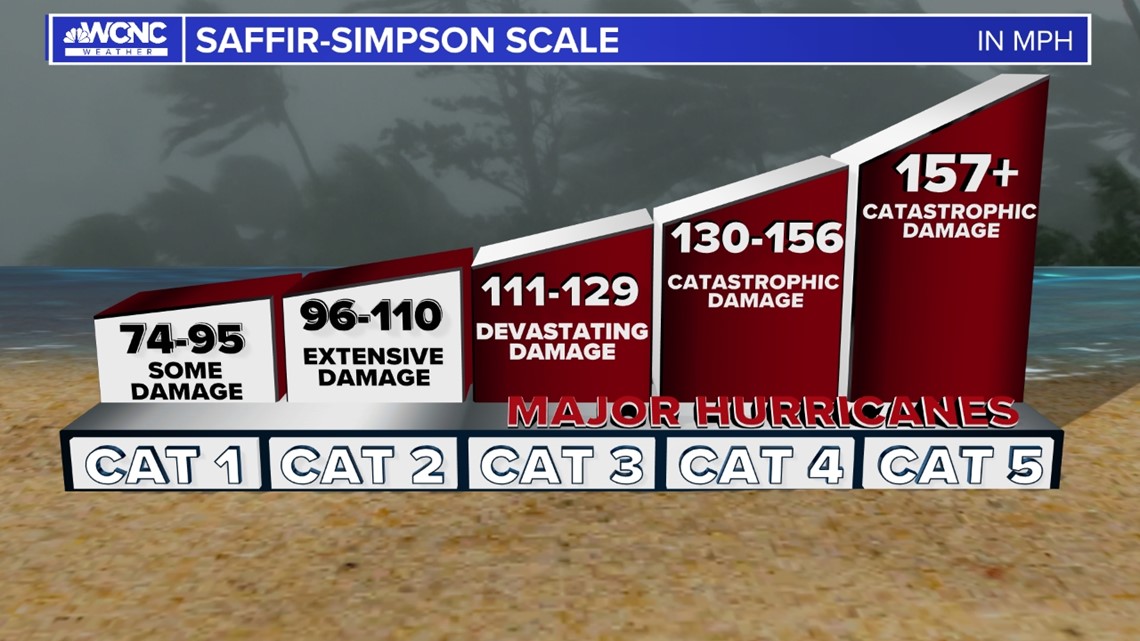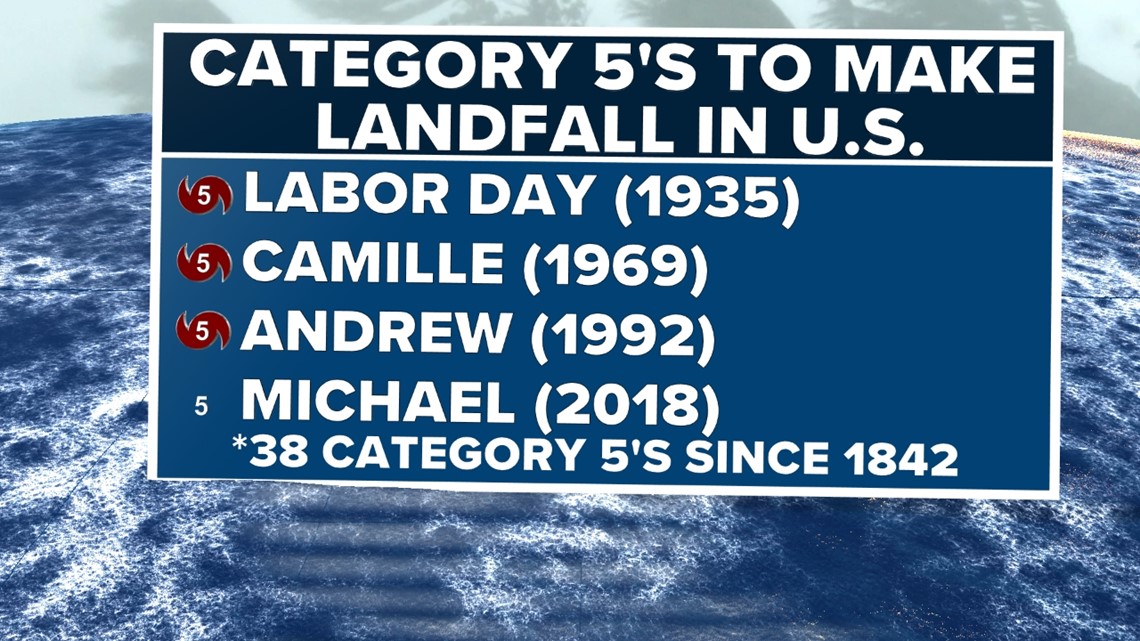MOORESVILLE, N.C. — Hurricane season starts Thursday, June 1, but before the season gets underway, we're taking a look at the power of hurricanes.
Did you know hurricane season typically peaks from August to October? The National Oceanic and Atmospheric Administration (NOAA) predicts a near-normal hurricane season in 2023 with 12 to 17 total named storms.
Of those 17 storms, five to nine could become hurricanes, including one to four major hurricanes. A major hurricane is Category 3 or higher.
The Power of a Hurricane
As wind speeds increase, the impact they have increases exponentially. A Category 3 Hurricane can produce 30 to 60 times more damage than a Category 1. Here are the wind impacts of each category. This does not include storm surge and flooding that bring some storms to another level.
Category 1 (74 to 95 mph)
Category 1 hurricanes produce very dangerous winds that cause some structural damage.
- Well-constructed frame homes could have damage to roofs, shingles, vinyl siding and gutters.
- Large branches of trees will snap and shallowly rooted trees may be toppled.
- Extensive damage to power lines and poles likely will result in power outages that could last a few to several days.
Category 1 examples:
Hurricane Florence made landfall as a Category 1. However, the rain and storm surge caused most of Florence's damage showcasing the number of weapons a hurricane has.
Hurricane Matthew also made landfall as a Category 1 but at one point was as strong as a Category 5.
Category 2 (96 to 110 mph)
At this level, the winds are extremely dangerous causing extensive damage:
- Well-constructed frame homes could sustain major roof and siding damage.
- Many shallowly rooted trees will be snapped or uprooted and block numerous roads.
- Near-total power loss is expected with outages that could last from several days to weeks.
Category 2 examples:
Hurricane Diane in 1955 was likely the most notable Category 2 storm. It peaked as a Category 3 but made landfall in North Carolina as a Category 2. This was a devastating rainmaker dumping over 20 inches over two days in New England. Diane created some of the most destructive floods the Northeast has ever seen.
Hurricane Arthur plowed through the Outer Banks as a Category 2 hurricane with max winds of 100 mph. This is one of the more infamous Category 2 storms and was the earliest recorded landfalling North Carolina hurricane, on July 4, 2014.
Category 3 (111 to 129 mph)
A Category 3 to 5 hurricane is considered to be a major hurricane.


At this level the damage is devastating. This is when wind damage is getting serious. These levels of wind can move cars.
- Well-built framed homes may incur major damage or removal of roof decking and gable ends.
- Many trees will be snapped or uprooted, blocking numerous roads.
- Electricity and water will be unavailable for several days to weeks after the storm passes.
Category 3 examples:
Hurricane Katrina peaked as a Category 5 hurricane but made landfall with winds at 120 mph as a strong Category 3 storm.
The 2005 season had the second-most tropical cyclones of any other season but had the most hurricanes to make landfall at Category 3 strength. Hurricanes Dennis, Katrina, Rita and Wilma (even though all of these reached Category 4 and 5 at their peaks).
Hurricane Fran was one of the strongest hurricanes to ever hit North Carolina and topped winds of 115 to 121 mph. This storm caused over $4 billion in damage.
Category 4 (130 to 156 mph)
Once you reach Category 4 and 5, the damage is catastrophic.
- Well-built framed homes can sustain severe damage with loss of most of the roof structure and/or some exterior walls.
- Most trees will be snapped or uprooted and power poles downed.
- Fallen trees and power poles will isolate residential areas.
- Power outages will last weeks to possibly months. Most of the area will be uninhabitable for weeks or months.
Category 4 examples:
There are a lot of notable names that have been retired that made landfall as Category 4.
Hurricane Harvey in 2017 had observed winds of 132 mph and sat in place leading to the worst flooding from a tropical cyclone in U.S. history.
Both Hurricane Charley (2004) and Hurricane Ian (2022) made landfall in a similar spot in southwest Florida as strong Category 4 hurricanes.
Laura and Ida in back-to-back years tied the Louisiana state record for strongest tropical winds hitting 150 mph.
Category 5 (157 mph or greater)
There have only been 38 hurricanes that have ever reached Category 5 strength. Of those, 14 have happened since the year 2000.
A Category 5 will often leave little left standing.
- A high percentage of framed homes will be destroyed, with total roof failure and wall collapse.
- Fallen trees and power poles will isolate residential areas.
- Power outages will last for weeks to possibly months.
- Most of the area will be uninhabitable for weeks or months.
In U.S. History, there have only been four hurricanes that ever made landfall as a Category 5.


Hurricane Andrew is one of the most famous on record but the most recent Category 5 Hurricane Michael was upgraded to the fourth on record maxing sustained winds at 157 mph. The images from Mexico Beach truly show what winds of this magnitude can do.

